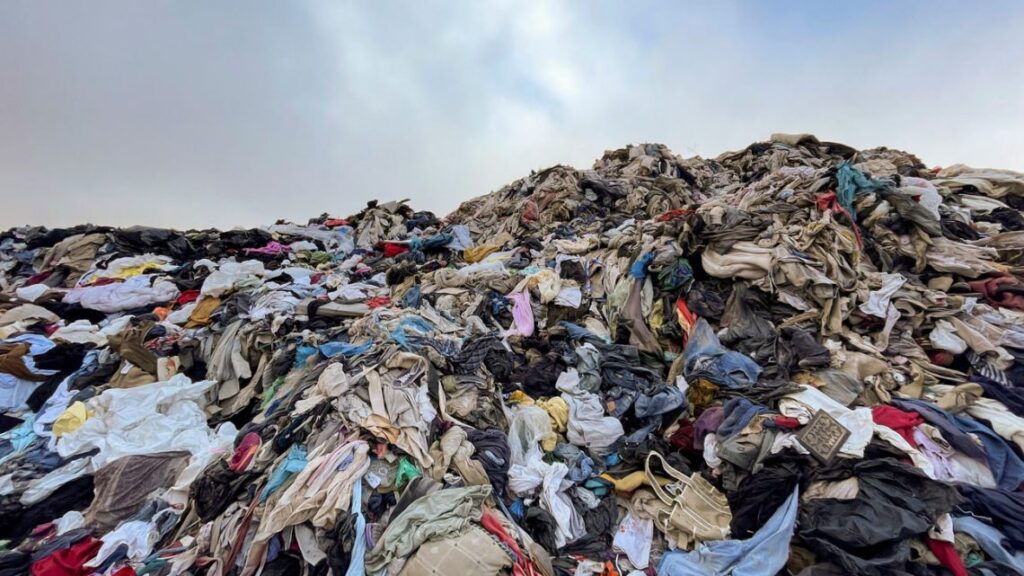
Last year during my moving into a condo, I packed several bags of old clothes and even new linens. I had no idea the house had stored so many textile goods until I did a thorough inventory. Out of sight, out of mind. You can say that again. In the end, I had to donate a majority of them to the American Red Cross. But my experience made me wonder how much clothes do we throw away in a lifetime? We dump fast and we also replenish fast. Why so fast? Don’t you bond with your belongings?
My closet has been pretty stable for more than a decade. Unless old clothes don’t fit me only then will I consider buying new ones. I’m blessed that I know how to sew. I tend to sew my worn clothes to extend their life span. After all, I’m sentimental and superstitious to believe it’s difficult to find clothes that I like and at the same time fit me. I knew nothing about fast fashion until I visited a few landfills in China, Ghana, Pakistan and India. I was never disappointed to see mounds of textile waste at these sites.
Why so fast? Do you know how much water, energy, chemicals, raw materials and labor are used in producing clothes that only been worn a short life span?
Today’s garments are made from a wide range of substances, including synthetic fabrics, fabrics sourced from plants and animals such as leather and cotton, chemicals for the fabric dyeing, processing, and finishing techniques, and various materials such as metals, wood, and plastic for hardware (buttons, zippers, buckles, clasps, etc.). The petroleum-based fibers are found in four main fabrics—polyester, acrylics, nylon, and spandex.
So, if you check out the fiber content label attached to your sweater or trousers or bags, these names are not strange to you. As author Jared Diamond said, “All modern societies depend on extracting natural resources, both non-renewable resources and renewable ones.” I often wonder if we will run short of natural resources to make clothes. I’m concerned about materials made from synthetics that can take centuries to break down. According to Ellen MacArthur’s study, the degradation process of cotton in a landfill can take up to five months and polyester up to 200 years.
Come to think of it, slow fashion is trendier. So, what is slow fashion? Forbes magazine explains succinctly. Slow fashion is clothes with trendless designs and premium, long-lasting quality. Only sustainably sourced, non-toxic substances are used in the making of such clothes. I don’t think shoppers will be against the idea of bonding an intimate relationship with slow fashion and indirectly doing good deeds for our society and the environment. Why so fast? Life is short indeed. Putting on a lasting clothing is to enjoy the beauty of becoming.
The Covid-19 pandemic has changed how we look at fashion. Since we can’t feel the actual sample and try it on, consumers tend to buy, buy, buy and return, return, and return via online shopping. Why so fast? If you’re a store receiver, aren’t you annoyed about the seemingly non-stopping returns and restocking from the same customers? You might wonder if they’re ever satiable.
Do you know the textile industry produces nearly 120 metric tons of carbon emissions every year, which accounts for 10 percent of the world’s total carbon emissions? Online shopping does tilt the scale in favor of the fast fashion businesses; but if you are sensitive to trends and conscientious, you will join the slow fashion movement like tens of thousands of ethical consumers in South Korea and elsewhere. I also hope more Chinese textile manufacturers will spread the seeds of sustainable consumption around the world. If “decoupling” is a hot buzzword, then decoupling economic activity from the consumption of finite resources is a win-win solution for humans and the planet.

I’ve never been to the Atacama Desert in Chile. But I can find stunning images of it on travel websites. I’m also learning that a beautiful site now has become the dumping ground of fast fashion. Tens of thousands of tons of unwanted clothing from Europe and the US are being dumped in the desert every year. South America, or precisely the world, is losing the pristine Amazon rainforest. Are we also losing our beautiful Atacama Desert, replacing it with mounds of fast-fashion fabrics that are usually non-biodegradable?
Slow fashion is more than a movement. Slow fashion is a healthy lifestyle. Slow fashion enables renewable resources to regenerate and provide humans with sustainable materials. Slow fashion empowers human creativity and conscience. Slow fashion exudes one’s outer beauty as well as her inner beauty through deeds.
If you are a sane doer, why not take the time to build a relationship with your clothes? Why not brag about your oldest collection in the closet? Why not learn to sew and repair clothes? Your efforts in giving a second life to used clothes and saving water and energy to recycling your clothes are the value you don’t see but is accruing in your taste of fashion. In the Year of the Rabbit, may you have a big bounce like a bunny to find your trendy slow fashion brands!
“To build may have to be the slow and laborious task of years. To destroy can be the thoughtless act of a single day.”
—Sir Winston Churchill
